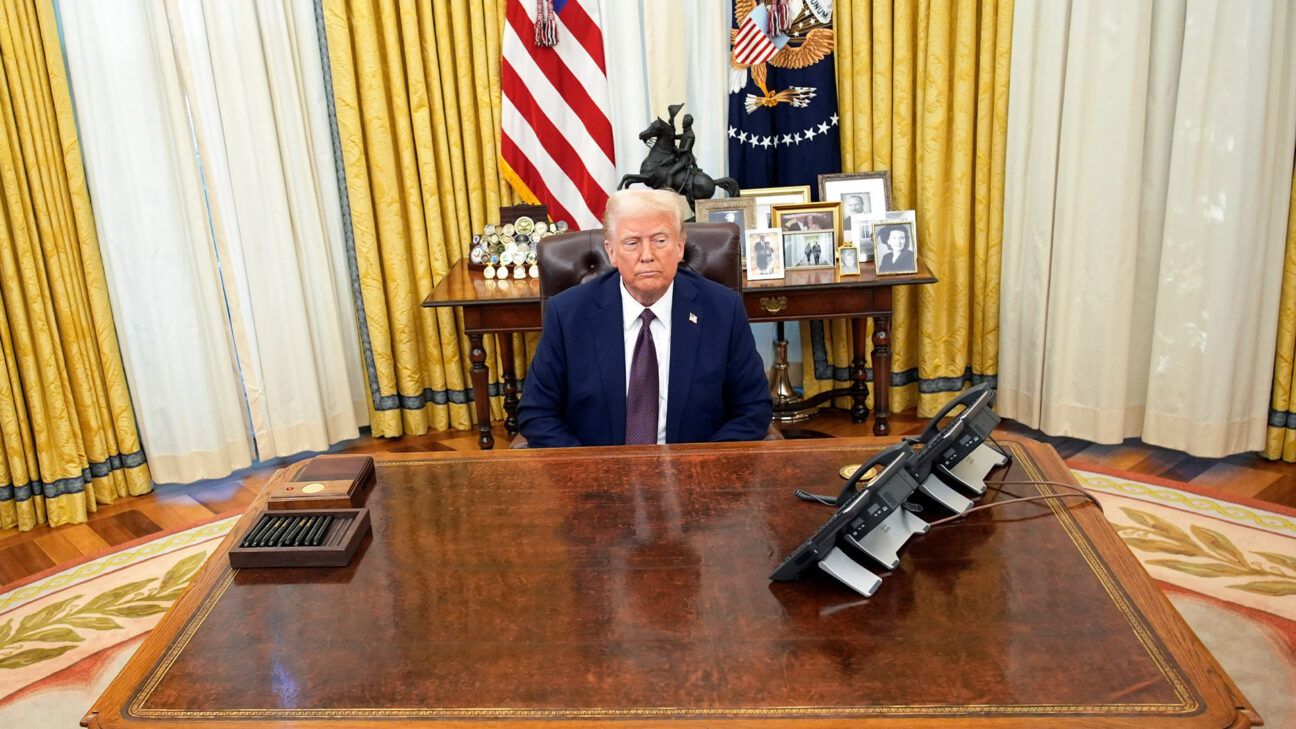
- The U.S. Department of Health and Human Services (HHS) announced an immediate pause on public communications from federal health agencies in January.
- The pause, ordered by the Trump administration, is expected to be temporary as the new administration aligns with federal agencies like the CDC, FDA, and NIH.
- Some communications have resumed, like the CDC’s MMWR report.
- While some experts have expressed concern over the pause, the HHS insists that exceptions will be made regarding matters critical to preserving public health.
Federal health agencies like the Centers for Disease Control and Prevention (CDC) and the Food and Drug Administration (FDA) are essential for keeping the public aware of health issues, from rising respiratory virus cases to bans on harmful food additives.
As the Trump administration’s freeze on federal reports from top health agencies like the CDC, FDA, and National Institutes of Health (NIH) continues, public health communication with the general public remains in limbo.
In the two weeks since the pause began, the new administration has directed the CDC to remove webpages containing health information with diversity, equity, and inclusion (DEI) language. This includes information pertaining to reproductive, LGBTQ+, gender, and racial health.
The pause in health agency communications collides with an ongoing surge in respiratory virus cases and mounting concern over the bird flu outbreak.
The pause was projected to end on February 1. Some external health reports have resumed, such as those pertaining to “critical health and safety needs,” according to Andrew G. Nixon, director of communications at HHS.
For instance, the CDC’s Morbidity and Mortality Weekly Report (MMWR), a weekly publication sharing health information and recommendations, was published on Thursday.
The Department of Health and Human Services (HHS) has not specified which communication streams remain paused.
“There are several types of external communications that are no longer subject to the pause. All HHS divisions have been given clear guidance on how to seek approval for any other type of mass communication,” Nixon told Healthline in an email.
Nixon explained that communications are now more flexible as “HHS and its Divisions work to align with President Trump’s agenda.”
According to a memo obtained by the Associated Press, Dorothy Fink, acting Secretary of the U.S. Department of Health and Human Services (HHS), told agency staff leaders that an “immediate pause” had been ordered on various aspects of communications with the general public, including regulations, announcements, press releases, and social media and website posts.
“HHS has issued a pause on mass communications and public appearances that are not directly related to emergencies or critical to preserving health. This is a short pause to allow the new team to set up a process for review and prioritization. There are exceptions for announcements that HHS divisions believe are mission critical, but they will be made on a case by case basis,” a spokesperson for the HHS Office of Public Affairs told Healthline in an email.
A temporary pause in agency communications is not highly unusual when a new president takes office. However, a pause typically occurs during the transition of power between leadership rather than post-inauguration.
According to the AP, the pause will continue until a political appointee approves agency communications. The Washington Post was the first to report on the pause.
The pause in federal health communications pertains to information published in the Federal Register, where the executive branch of the government communicates rules and regulations.
This includes many important aspects of public health communication, including the CDC’s MMWR report.
During President Trump’s first term in office, one of his appointed officials tried to assume control of the MMWR journal, which published information about the COVID-19 pandemic that did not align with White House messaging.
“Not a day goes by when CDC isn’t tracking a potential threat to our health,” Richard Besser, MD, president and CEO of the Robert Wood Johnson Foundation and former acting director of the CDC, said in a statement shared with CNN.
“Right now they are letting us know about bird flu in cows, birds, and people. Every time there is an outbreak involving a food, they let us know how to avoid getting sick. They let us know where diseases are occurring around the world that could affect our health here or if we travel. Cutting off communications from CDC puts our health at risk and prevents our doctors, nurses, and public health leaders in our communities from doing their jobs. I urge the administration to quickly lift the pause,” Besser continued.
Monica Gandhi, MD, MPH, professor of medicine at the University of California, San Francisco, told Healthline that she understands the need for a new administration’s health team to review health communications coming from the main federal health organizations. Still, she hopes the pause is short-lived.
Gandhi explained that at the NIH, the pause on communications appears to have shut down operations across several domains, “including in grant reviews and in council meetings, where decisions on which grants to fund—based on peer review and scores — are made.”
“This is very serious in that the halting of these important meetings at the NIH has sowed confusion, chaos, and a lot of concern at academic medical centers where faculty rely on the NIH-funded process for their research work. This has also sowed confusion among study participants in NIH-funded trials and community members who support these trials on when funding decisions will be made,” Gandhi noted.
Agencies like the CDC, NIH, and FDA help safeguard the U.S. population against outbreaks, epidemics, and foodborne illnesses, and they research cures for diseases.
Fink wrote in her memo to federal agency staff leaders that exceptions may be made for communications impacting “critical health, safety, environmental, financial or nation security functions,” the AP reports.
For instance, the FDA’s ongoing list of recalls remains current, and a public notice about a
Still, these exceptions could still be subject to further scrutiny, leaving many health experts and consumer advocates concerned about public safety.
“The worry is that the CDC needs to update numbers on their website (i.e., new H5N1 cases) on a daily basis, so any delay can be a problem,” Gandhi said. “I hope this ban reverses early next week, as the whole process has generated havoc,” Gandhi.
Former CDC outbreak investigator Ali Khan, MD, told the AP that pauses in communication are reasonable during transitions of power in the executive branch.
“The only concern would be is if this is a prelude to going back to a prior approach of silencing the agencies around a political narrative,” he said.
Trump officials ordered an immediate pause on public communications from federal health agencies like the CDC, FDA, and NIH in January. The pause was expected to end by February 1, with some health reports still remaining in limbo.
Experts and consumer advocates have expressed concern over the pause, but the HHS said exceptions would be made regarding matters critical to preserving public health. The CDC’s MMWR report, for instance, has resumed publication. Other experts have said that temporary pauses like this are typical during transitions of power.




